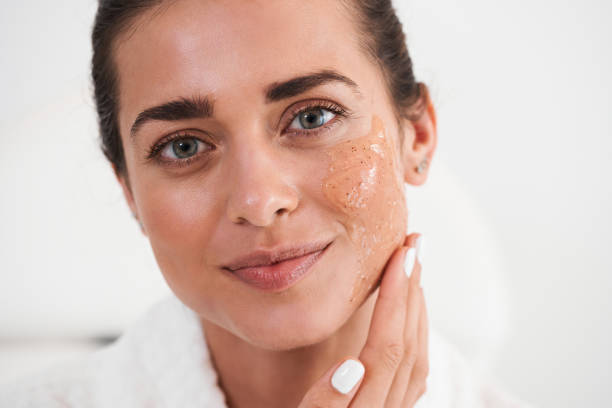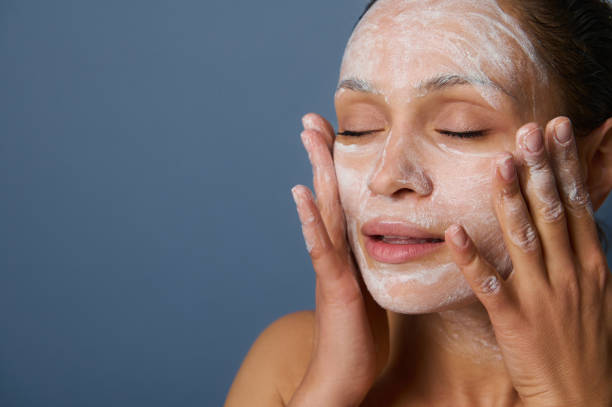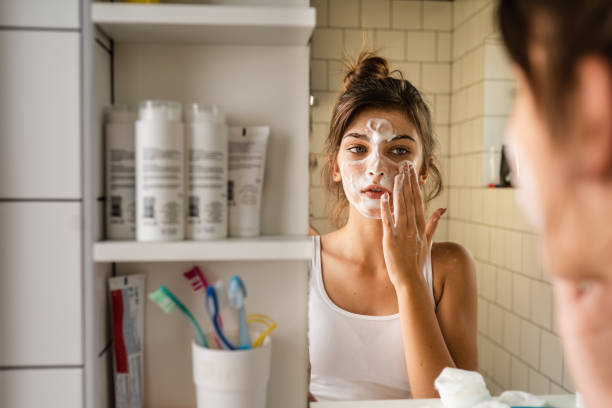The question of how often one should use an exfoliating cleanser is akin to finding the sweet spot in a skincare routine – it’s essential, but often elusive. Exfoliating cleansers, designed to slough away dead skin cells, can reveal radiant and smooth skin underneath. However, too much exfoliation can strip the skin of its natural oils and protection, leading to irritation and sensitivity. This article will provide clarity and guidelines to help you strike the perfect balance for your skin, ensuring you reap the rewards of exfoliation without the drawbacks. Consideration of skin type, environmental factors, and individual skin concerns is crucial to determine the appropriate frequency for exfoliating cleanser use.
What is an Exfoliating Cleanser?

An exfoliating cleanser serves a dual purpose—it cleanses your skin while also removing dead skin cells which can clog pores and cause dullness. There are two primary types of exfoliants: physical, which use small grains or granules for a scrubbing effect, and chemical, which utilize acids to chemically dissolve dead skin cells. The benefits are extensive, ranging from improved texture and tone to enhanced absorption of subsequent skincare products. The art of exfoliation hinges not only on the choice of the exfoliant but also on how often it is used.
Factors Influencing Exfoliation Frequency

No single exfoliation regimen fits all as several factors need to be considered. Your skin type—be it oily, dry, combination, or sensitive—will significantly influence your exfoliation needs. For instance, oily skin might tolerate more frequent exfoliation, while sensitive skin requires a cautious approach. Environmental elements like humidity, temperature, and pollution also play a role, as do particular skin conditions that may necessitate adjusting exfoliation frequency to avoid exacerbating skin issues.
Recommended Frequency of Use
There’s a general rule of thumb when it comes to the recommended frequency of using an exfoliating cleanser. Here is a breakdown based on different skin types:
Oily Skin: 2-3 times per week
Normal/Combination Skin: 1-2 times per week
Dry or Sensitive Skin: Once a week or less, with gentle exfoliants
It’s best to start slowly and monitor your skin’s response, adjusting as needed. Over-exfoliation can lead to a compromised skin barrier, so if you notice signs of irritation or dryness, it’s time to reduce frequency.
| Skin Type | Recommended Frequency | Signs of Over-Exfoliation |
|---|---|---|
| Oily | 2-3 times per week | Increased shininess, breakouts |
| Normal/Combination | 1-2 times per week | Redness, sensitivity |
| Dry/Sensitive | Once per week or less | Soreness, peeling |
The above table illustrates a general guide that can help determine the ideal starting point for incorporating an exfoliating cleanser into your routine. Please note that personal tolerance and the type of exfoliant will dictate the eventual perfect frequency for you.
Maximizing the Benefits of Your Exfoliating Cleanser
To make the most out of your exfoliating routine, follow these tips:
- Use gentle, circular motions without applying excessive pressure to avoid skin damage.
- Rinse thoroughly with lukewarm water as extreme temperatures can irritate the skin.
- Follow up with a hydrating moisturizer to replenish moisture and soothe the skin.
Additionally, using complementary skincare products like hydrating serums or SPF can further protect and enhance skin health post-exfoliation.
Special Considerations for Exfoliating Cleanser Use
While integrating an exfoliating cleanser into your skin care regimen, consider if your routine is better suited for morning or evening use. Additionally, those with sensitive skin should proceed with caution and perhaps begin with a patch test. There is also the necessity to understand how to incorporate professional treatments, like chemical peels or microdermabrasion, without overburdening the skin.
Here are some tailored recommendations for specific skin concerns:
- For Oily and Acne-Prone Skin: Look for salicylic acid-based cleansers that can help to unclog pores.
- For Dry and Sensitive Skin: Choose gentle exfoliants with hydrating ingredients to lessen any potential irritation.
Conclusion
Determining how often you should use an exfoliating cleanser is a personal journey that hinges on your skin type, lifestyle, and individual skin concerns. By starting with the guidelines provided and being attentive to your skin’s reaction, you can find the ideal balance to achieve a healthy, glowing complexion. Remember that less is often more with exfoliation; listen to your skin, and adjust accordingly for the best results.
FAQs
- Q1: Can over-exfoliating damage my skin?
- A1: Yes, over-exfoliating can strip your skin of its natural barrier, potentially leading to increased sensitivity and susceptibility to irritation or infections.
- Q2: How can I tell if I’m exfoliating too much?
- A2: Look for signs such as redness, peeling, soreness, or increased sensitivity, which all suggest that the skin might need a break from exfoliation.
- Q3: Are exfoliating cleansers suitable for daily use?
- A3: While some gentle cleansers may be safe for daily use, it’s essential to assess your skin’s tolerance and the product’s strength before deciding.
- Q4: Should I exfoliate in the morning or at night?
- A4: Nighttime is generally preferred due to lower sun exposure risk and skin’s natural repair process overnight. Nevertheless, personal routine and skin response should guide your choice.
- Q5: Can I use other exfoliating products with an exfoliating cleanser?
- A5: It’s crucial to be mindful of total exfoliation to prevent over-exfoliating. Use a gentler exfoliating cleanser if combining with other exfoliating products or reduce the frequency of use.




